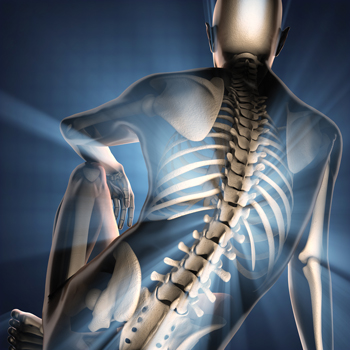Internist involvement crucial to easing early menopause
Assessments for the potential symptoms of menopause should begin when women are in their 40s and may be entering perimenopause.
About half of women begin menopause by age 51 years, according to the National Institute on Aging, and some women may experience its symptoms as much as a decade before that.
“It is very important for primary care physicians to be involved and assess for menopause in women of this age because a lot of women past childbearing years do not necessarily continue to see their OB/GYN,” said Holly L. Thacker, MD, professor and chair of the Center for Specialized Women's Health at Cleveland Clinic Lerner College of Medicine in Ohio.
Assessments should begin when women are in their 40s and may be entering perimenopause, Dr. Thacker said. Women in perimenopause often experience many of the same symptoms as women in menopause, including hot flashes and night sweats, vasomotor symptoms, irregular periods, lower sex drive, vaginal dryness, pain during intercourse, urine leakage, urinary urgency, mood swings, or difficulty sleeping.

“Women in perimenopause often have more symptoms than during menopause,” Dr. Thacker said. “The SWAN study showed us that.” The Study of Women's Health Across the Nation was a large, longitudinal study that characterized physiological and psychosocial changes that occurred as the more than 3,000 enrolled women transitioned to menopause.
Data from SWAN have shown that during late perimenopause women began to experience vasomotor symptoms, accelerated bone loss in the spine and hip, greater risk for depressive symptoms, alterations in hemostasis, and sleep difficulty.
“For most women, menstrual cycle changes are the first clue that they are entering the menopause transition, but for others, other symptoms may predominate,” said Cynthia A. Stuenkel, MD, clinical professor at the University of California, San Diego. “Up to 45% of women, almost half, could have early symptoms, and clinicians should stay open-minded when trying to recognize possible symptoms of menopause.”
Managing symptoms
Hormone therapy is still the best option for treatment of routine menopausal symptoms, according to Peter F. Schnatz, DO, FACP, associate chairman and residency program director at Reading Hospital in West Reading, Pa., past president of the North American Menopause Society (NAMS), and an NAMS Certified Menopause Practitioner. “While there are other options available, hormone therapy is still far and away the most effective and, for women without contraindications, the best option,” he said.
Dr. Schnatz noted that for many years, the medical community used the phrase “the lowest dose [of hormone therapy] for the shortest duration.” However, he said, this was confusing and seemed to imply an excessive risk. During his tenure as NAMS president, Dr. Schnatz said one of his initiatives was to adopt the hormonal therapy verbiage of using the “appropriate dose, via the appropriate route, for the appropriate duration.”
“Clinicians have to be familiar with the different dose options and routes—oral, transdermal, topical, vaginal—and then consider the duration of treatment,” Dr. Schnatz said. “When the patient comes in for her annual visit, we must reassess the indication for usage in balance with the risks and benefits of treatment.”
For example, treatment of women experiencing symptoms of menopause often varies by fertility status, according to Dr. Schnatz.
“If a woman is in perimenopause and still fertile, a low-dose contraceptive can be a good option as it can keep periods regular and treat many of the perimenopausal symptoms,” he said. “A typical hormone therapy dose that a woman would take during menopause may be high enough to treat vasomotor symptoms but not high enough to be adequate contraception.”
Nonhormonal treatments are available for women who cannot or choose not to take hormone therapy for vasomotor symptoms, according to a 2015 position statement from NAMS. The statement recommended the use of cognitive behavioral therapy or clinical hypnosis, as well as paroxetine salt, selective serotonin reuptake inhibitors (SSRIs) and selective-norepinephrine reuptake inhibitors (SNRIs), gabapentinoids, and clonidine for treatment of vasomotor symptoms.
There are several other possible approaches to treating menopause symptoms, such as mindfulness-based stress reduction, alternative medicine supplements, and stellate ganglion blockade. However, these methods are not all supported by similar strength and extent of evidence, Dr. Stuenkel said. Cognitive-behavioral therapy and clinical hypnosis are evidence-based, but the effectiveness of alternative medicine supplements varies widely in randomized controlled trials, and while stellate ganglion blockade is very effective, formal study to date is limited, she noted.
In the past few years, several new treatments have been approved for vaginal symptoms of menopause, Dr. Stuenkel added. Ospemifene is an oral selective estrogen receptor modulator approved for vulvar or vaginal atrophy associated with menopause. Another new therapy is prasterone, a vaginal insert.
“I always encourage clinicians to ask women about vaginal dryness or discomfort during intercourse,” Dr. Stuenkel said. “I also emphasize to be mindful when prescribing medications to male patients for erectile dysfunction to remind them that their wives might need a head start with vaginal estrogen or other therapy in order to keep up with any new sexual activity.”
Balancing risk/benefit
In addition to considering the dose, route, and duration of hormone therapy, clinicians must also be aware of certain medical conditions that can occur or be exacerbated during the menopause transition.
Cardiovascular factors, such as metabolic syndrome, can increase during perimenopause and menopause. This increased risk may be related to a reduction in estrogen production, but cardiovascular benefits of estrogen therapy have been controversial in clinical trials to date, Dr. Stuenkel said.
Women's risk for osteoporosis may also increase, depending on attainment of peak bone mass earlier in life, as well as bone loss following menopause. It is important for women to be evaluated for bone mineral density and osteoporosis risk. Knowledge of these risks can be helpful in the assessment and management of each individual patient, Dr. Stuenkel said.
Some patients and clinicians may still harbor concerns about the use of hormone therapy and risk for breast cancer. In 2002, the Women's Health Initiative study of estrogen plus progestin in healthy menopausal women was stopped early because of an increased risk of invasive breast cancer, coronary heart disease, stroke, and pulmonary embolism in the treatment group. However, longer follow-up of the participants in this study has shed more light on the results, according to Drs. Thacker and Stuenkel.
“The WHI study was a very scientific study but was unscientifically applied, which is unfortunate because it affected a generation of women,” Dr. Thacker said.
Although the WHI was large, it looked only at oral administration of one formulation of estrogen and included a limited number of women with bothersome vasomotor symptoms who were younger than age 60 and within 10 years of menopause onset.
“Fifteen years later, we are comfortable saying that some of the negative outcomes from WHI were because hormone therapy was initiated in women up to age 79,” Dr. Stuenkel said. “When the data are broken down by age and years since menopause, the numbers look very safe for younger women who are most likely to have menopausal symptoms.”
In fact, NAMS recently reviewed the newest literature and evidence on the use of hormone therapy for menopause in its 2017 Hormone Therapy Position Statement, which was published online June 22 by Menopause. The organization recommended that “for women aged younger than 60 years or who are within 10 years of menopause onset and have no contraindications, the benefit-risk ratio is most favorable for treatment of bothersome vasomotor symptoms and for those at elevated risk for bone loss or fracture.”
However, in its statement NAMS qualified its recommendation, adding that “for women who initiate hormone therapy more than 10 or 20 years from menopause onset or are aged 60 years or older, the benefit-risk ratio appears less favorable because of the greater absolute risks of coronary heart disease, stroke, venous thromboembolism, and dementia.” Dr. Stuenkel recommended that internists also look to the Endocrine Society's 2015 Clinical Practice Guideline for treatment of symptoms of menopause, as well as the American Association of Clinical Endocrinologists' menopause guidelines, which were updated in 2017.
Mental health
Dealing with some of the symptoms of menopause, such as sleep disturbances or mood swings, can be difficult for some women. Dr. Stuenkel said studies show that depressive symptoms during the menopause transition can affect as many as one in four women and that full-blown depression is much less common, affecting approximately 3%. Nighttime hot flashes are associated with increased depression scores, and new research reveals that anxiety may be more prevalent in some cases, she said.
However, for most women, there is little evidence linking menopause with depression. “Women with premature menopause under the age of 45 can be affected because of issues related to childbearing,” Dr. Thacker said. She also noted that women who have experienced hormonally associated depression in the past, such as postpartum depression, should be followed proactively during perimenopause and menopause. “In general, though, there is a great myth of menopause melancholia. I think most women take it in stride,” she said.
“Many studies show that menopause for many women is one of the best phases of life,” Dr. Schnatz added. “It is a time when the kids are out of the house and many women have more freedom in their lives. That is why it is important to see someone who is well trained in menopausal management to treat symptoms and help to make it the wonderful time that it can and should be.”
Dr. Stuenkel said that physicians in need of guidance about making the best treatment decisions for their patients in menopause can download a free mobile app from NAMS called MenoPro to tailor treatment decisions based on each patient's medical history and preferences.
“I know a lot of young practitioners who are already using this app,” Dr. Stuenkel said. “All they have to do is punch in their patient's parameters in real time in the office and the app will help you to sort out the best treatment approach.”
There is also a patient version of the app that allows a woman on her own to “try on” several different therapeutic options and see how they fit, Dr. Stuenkel said. “It's so important to provide women with evidence-based information as an antidote to so much misinformation they encounter on the web,” she added.
If available online educational resources like the NAMS website or the Cleveland Clinic's Speaking of Women's Health website are not enough, physicians should feel comfortable referring their patients in perimenopause or menopause, Dr. Thacker said. Dr. Stuenkel noted that the NAMS website includes a section on finding a clinician, including practitioners who have passed the NAMS Certified Menopause Practitioner examination, which demonstrates both interest and competence.
“It can be very satisfying to treat this group of women,” Dr. Thacker said. “But always try to have a good referral network, if needed, rather than leaving women with these symptoms to their own devices.”





